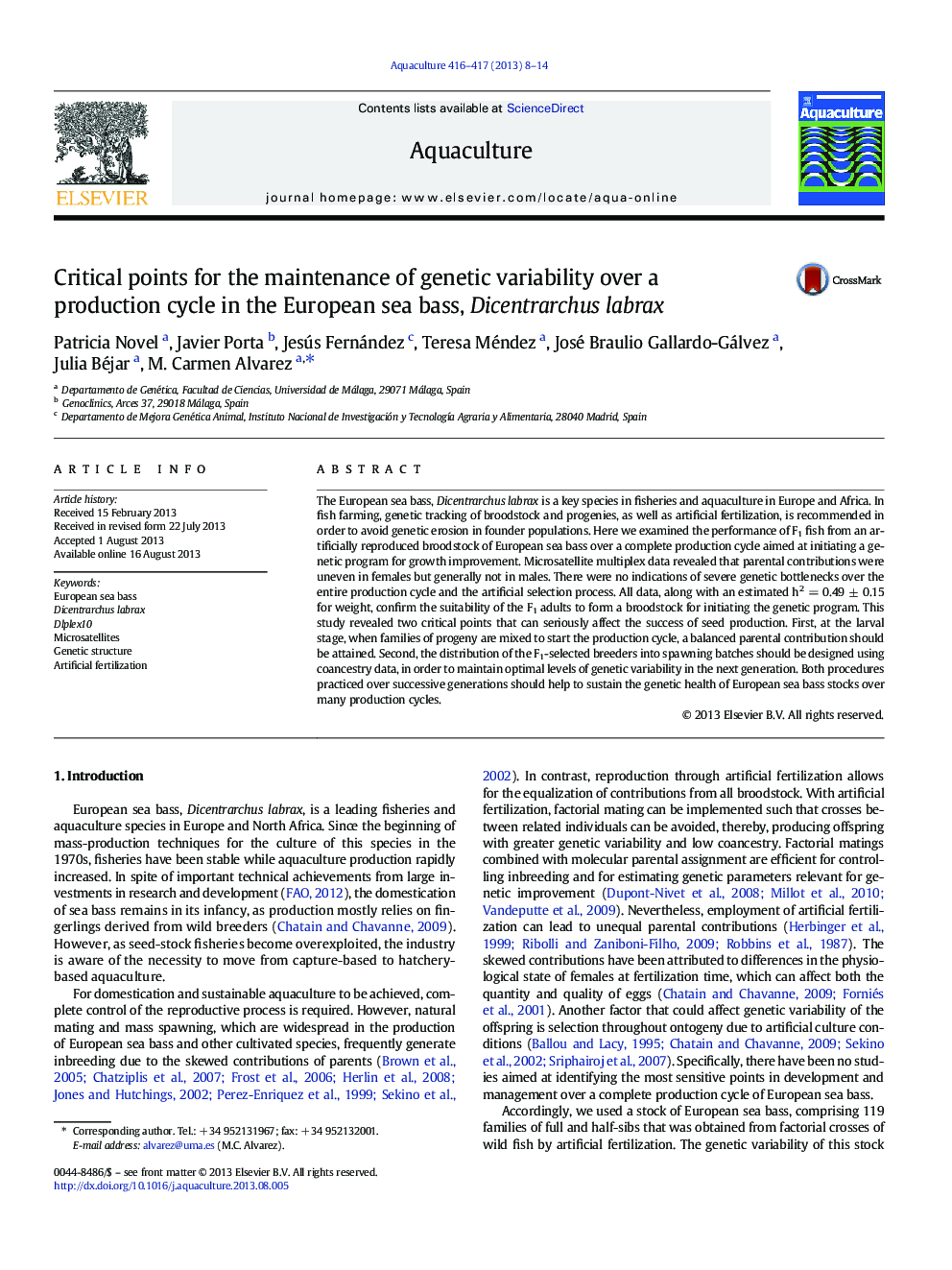| Article ID | Journal | Published Year | Pages | File Type |
|---|---|---|---|---|
| 2422023 | Aquaculture | 2013 | 7 Pages |
Abstract
The European sea bass, Dicentrarchus labrax is a key species in fisheries and aquaculture in Europe and Africa. In fish farming, genetic tracking of broodstock and progenies, as well as artificial fertilization, is recommended in order to avoid genetic erosion in founder populations. Here we examined the performance of F1 fish from an artificially reproduced broodstock of European sea bass over a complete production cycle aimed at initiating a genetic program for growth improvement. Microsatellite multiplex data revealed that parental contributions were uneven in females but generally not in males. There were no indications of severe genetic bottlenecks over the entire production cycle and the artificial selection process. All data, along with an estimated h2 = 0.49 ± 0.15 for weight, confirm the suitability of the F1 adults to form a broodstock for initiating the genetic program. This study revealed two critical points that can seriously affect the success of seed production. First, at the larval stage, when families of progeny are mixed to start the production cycle, a balanced parental contribution should be attained. Second, the distribution of the F1-selected breeders into spawning batches should be designed using coancestry data, in order to maintain optimal levels of genetic variability in the next generation. Both procedures practiced over successive generations should help to sustain the genetic health of European sea bass stocks over many production cycles.
Keywords
Related Topics
Life Sciences
Agricultural and Biological Sciences
Aquatic Science
Authors
Patricia Novel, Javier Porta, Jesús Fernández, Teresa Méndez, José Braulio Gallardo-Gálvez, Julia Béjar, M. Carmen Alvarez,
